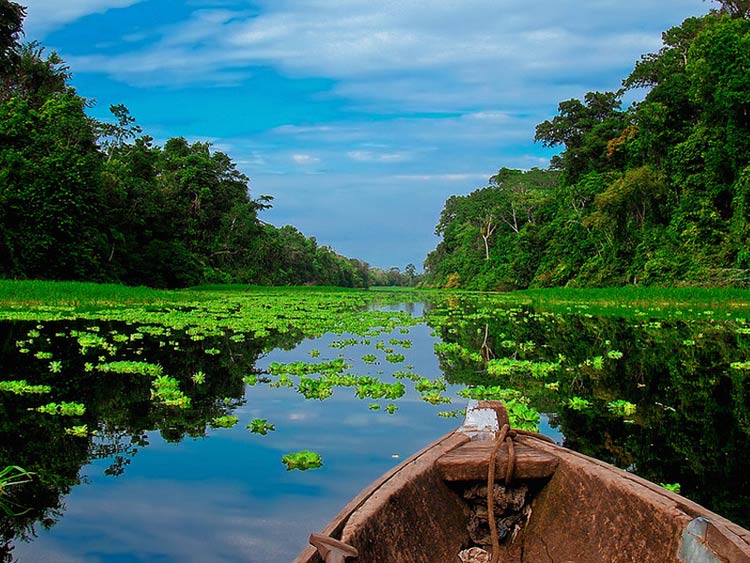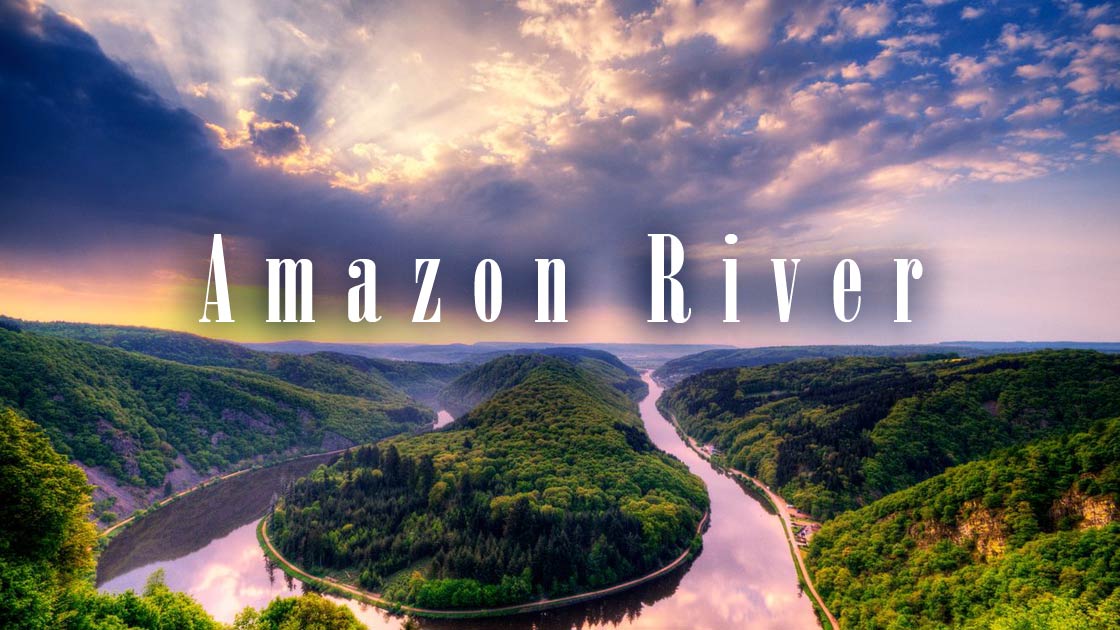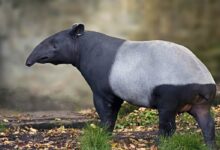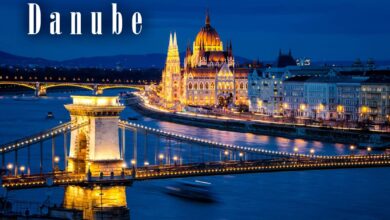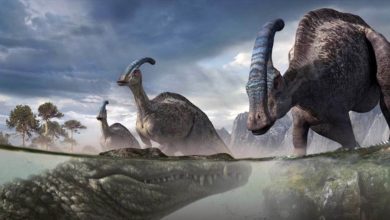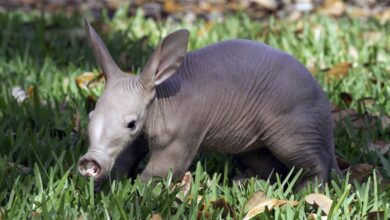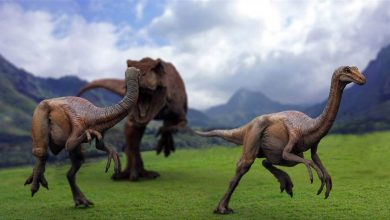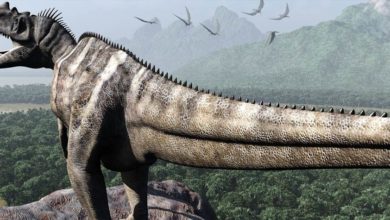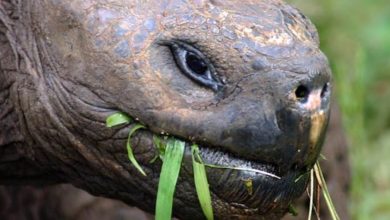The power of nature: the Amazon River
The Amazon River is the largest river in the world by discharge and the second longest. It runs through Brazil, Colombia, and Peru and empties into the Atlantic Ocean. It is also the widest river in the world, with a width of up to 11 kilometers (7 miles) during the rainy season. The Amazon rainforest, also known as the Amazon jungle, covers much of the river’s basin and is one of the most biodiverse places on Earth. The river and its tributaries are also home to many indigenous communities. The Amazon is an important source of livelihood for many people living in the region, including fishing and transportation.
In addition to its ecological and cultural significance, the Amazon River also plays an important role in global climate patterns. The vast amount of water in the river helps to regulate regional and global weather patterns, and the rainforest that covers much of the basin acts as a carbon sink, helping to mitigate the effects of climate change. The Amazon is also a major source of fresh water, providing drinking water for millions of people and irrigation for crops.
The Amazon River has a rich history and has been explored by many different cultures throughout history. The indigenous people of the region have lived along the river for thousands of years, and the area has also been explored by European explorers and settlers since the 16th century. The river and its tributaries are also an important transportation route, with many towns and cities built along its banks.
However, the Amazon and its rainforest are under threat from human activities such as deforestation, mining, and agriculture. These activities not only harm the local ecosystem and threaten the survival of many plant and animal species, but also contribute to climate change, deforestation and loss of biodiversity. It is crucial that efforts are made to protect and preserve this unique and important ecosystem.

Location
The Amazon River is located in South America and runs through several countries including Brazil, Peru, Ecuador, Colombia, Venezuela, Bolivia, and the small country of Guyana. The river begins in the Andes Mountains in Peru and flows eastward, eventually emptying into the Atlantic Ocean. The majority of the river runs through Brazil, where it is known as the Solimões River, and Peru, where it is known as the Marañón River, before it joins and becomes known as the Amazon. The Amazon River basin, which includes the river and all of its tributaries, covers an area of about 7,050,000 square kilometers (2,720,000 square miles) and includes parts of nine South American countries.
Name
The Amazon River is named after the indigenous tribe of the Amazonas, who lived in the region where the river is located. The word “Amazon” is said to come from the indigenous word “amassona” or “amassan” which means “warrior” or “without breast” in reference to the legend of the Amazon women. The name was first used by the Spanish explorer Francisco de Orellana, who named the river after the tribe he encountered while exploring the region in the 16th century. The river is also known by different names in different countries. In Brazil, it is known as the Solimões River, while in Peru, it is known as the Marañón River.
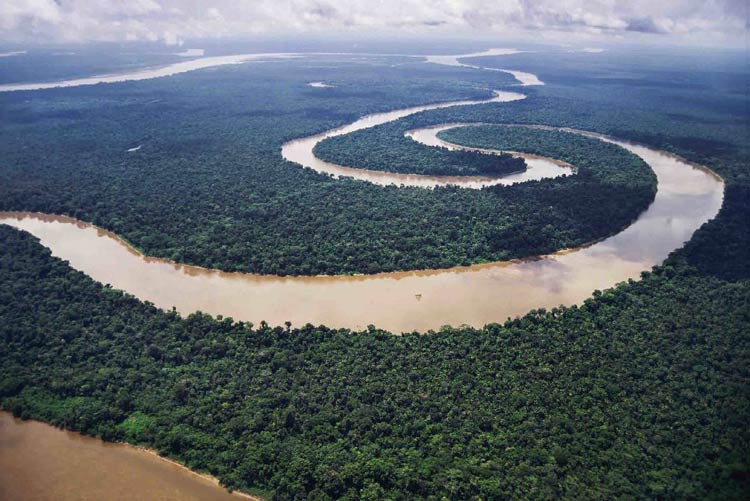
A bit of history of the Amazon River
The Amazon River has a rich history that dates back to pre-Columbian times. The indigenous people of the region have lived along the river for thousands of years, and the area has also been explored by European explorers and settlers since the 16th century.
The first European to explore the Amazon River was the Spanish explorer Francisco de Orellana, who set out from Quito, Ecuador in 1541. He encountered many indigenous tribes during his journey, and named the river after the tribe of the Amazonas, whom he encountered. Orellana’s journey marked the first recorded navigation of the entire length of the Amazon River.
In the following centuries, the Amazon River and its basin became an important area for the colonization and exploration by the Portuguese and the Spanish. The Portuguese established trading posts and settlements along the river, and it became an important route for the export of goods such as rubber, Brazil nuts, and exotic animals.
In the 19th century, the Amazon River and its tributaries were explored by many scientists and naturalists, such as the British explorer and naturalist Henry Walter Bates and the German explorer and naturalist Alexander von Humboldt. Their explorations and discoveries helped to reveal the rich biodiversity and natural resources of the region.
In the 20th century, the development of infrastructure such as roads and hydroelectric dams, and the expansion of industries such as logging, mining, and agriculture have had a significant impact on the Amazon River and its basin. The river and its tributaries are also an important transportation route, with many towns and cities built along its banks. However, these activities also have negative impact on the local ecosystem and threaten the survival of many plant and animal species, and contribute to deforestation and loss of biodiversity.
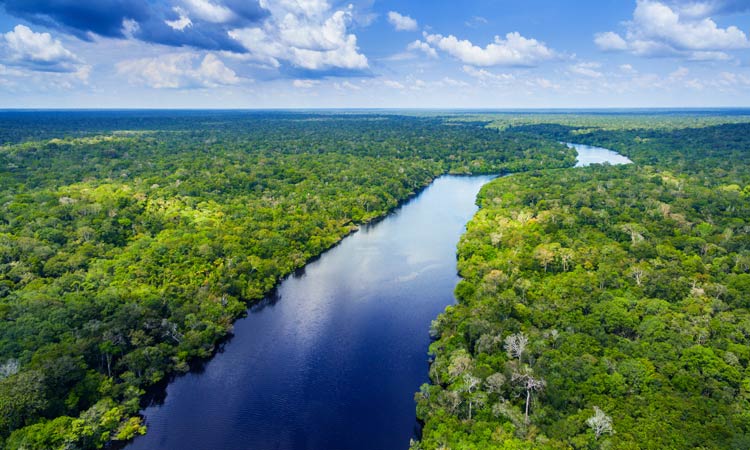
Climate
The climate of the Amazon River basin is characterized by high humidity and heavy rainfall. The region experiences a tropical climate, with temperatures typically ranging from 25 to 34 degrees Celsius (77 to 93 degrees Fahrenheit). The rainy season typically lasts from December to May, with heavy rainfall during this period. The dry season lasts from June to November, with less rainfall and higher temperatures.
The Amazon rainforest, which covers much of the river’s basin, plays a critical role in regulating global climate patterns. The vast amount of vegetation in the rainforest releases water vapor into the atmosphere, which helps to create clouds and precipitation. This water vapor also helps to regulate regional and global temperature patterns. The Amazon rainforest is also a major carbon sink, absorbing and storing large amounts of carbon dioxide and helping to mitigate the effects of climate change.
However, climate change is also affecting the Amazon. The region has been experiencing an increase in temperature and changes in precipitation patterns, which can lead to changes in vegetation patterns, increased wildfires and threats to biodiversity. Human activities such as deforestation, mining, and agriculture are also contributing to these changes. It is crucial that efforts are made to protect and preserve this unique and important ecosystem, to ensure the conservation of the rich biodiversity and to avoid the negative impacts of climate change in the region.
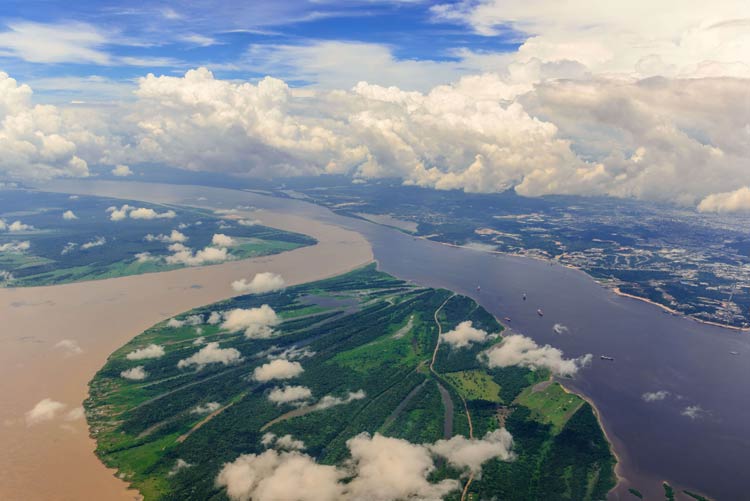
Hydrology
The hydrology of the Amazon River is closely linked to the region’s climate and vegetation patterns. The heavy rainfall during the rainy season causes the river’s water levels to rise, with peak levels typically occurring in June or July. During this time, the river can rise as much as 30 meters (98 feet) above its low-water mark, flooding nearby areas and creating a network of temporary lakes and channels known as varzea. The varzea are important habitats for many plant and animal species, and are also used for fishing and agriculture.
During the dry season, the water level of the river drops, revealing sandbars and islands that are not visible during the rainy season. This change in water level also causes the river’s flow to slow, and the water becomes more clear and sediment-free.
The Amazon River also has a unique and complex system of tributaries and channels, which are important for the movement of water, sediment, and nutrients throughout the river basin. Many of the tributaries are fed by the Andes Mountains, and their water levels also fluctuate with the changing seasons.
The large volume of water in the Amazon River also plays an important role in regulating regional and global weather patterns. The water in the river helps to cool the surrounding air and create clouds and precipitation. The river also plays an important role in the carbon cycle, with the vegetation in the basin absorbing and storing large amounts of carbon dioxide.
However, human activities such as dams, mining and deforestation can have negative impacts on the hydrology of the Amazon River basin. The construction of dams can change the flow of water and disrupt the natural patterns of the river, while mining and deforestation can cause erosion and sedimentation, impacting the quality and quantity of water in the river.
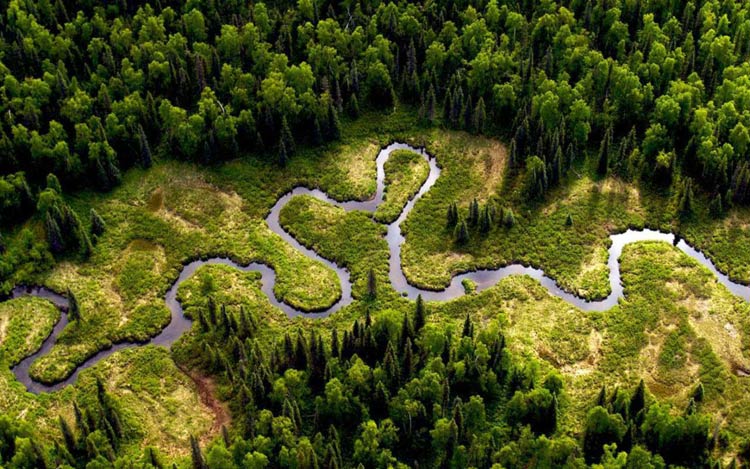
Source (beginning) of the Amazon River
The source or beginning of the Amazon River is a debated topic among scientists and geographers. The Amazon is a complex system of rivers and tributaries, and there is not a single point of origin.
Traditionally, the source of the Amazon River has been considered to be the Marañón River in the Peruvian Andes. The Marañón River is formed by the confluence of several smaller rivers, including the Ucayali and Apurímac rivers. The Ucayali and Apurímac rivers, in turn, are formed by the confluence of smaller tributaries such as the Mantaro and Ene rivers.
However, more recent studies have suggested that the true source of the Amazon River may be the Mantaro River in the Peruvian Andes. According to this theory, the Mantaro River is the longest tributary of the Ucayali River, and contributes the most water to the Amazon River system.
Other studies have also pointed out that the headwaters of the Apurímac, Ene, and Mantaro rivers are located in the Peruvian Andes, and that their confluence forms the Ucayali River, which in turn joins the Marañon River to form the Amazon River. This is why some scientists consider that the Amazon River has its origin on the Apurímac-Ene-Mantaro (AEM) River, which is a complex hydrographic system that eventually becomes the Amazon River, making the Apurímac-Ene-Mantaro River the true source of the Amazon.
It’s important to note that, while the debate continues, the Amazon River is considered the largest river in the world by discharge and the second longest, and it’s formed by the confluence of many rivers and tributaries in the region.
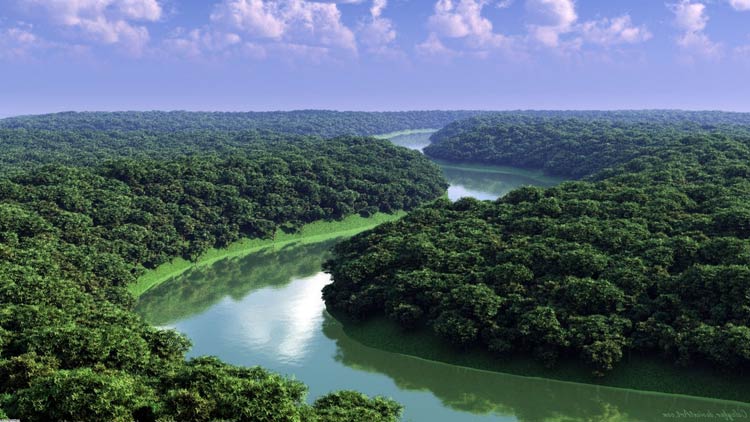
The Upper Amazon or Solimões
The Upper Amazon or Solimões is the section of the Amazon River that runs through the northern part of Brazil. It is formed by the confluence of the Rio Negro and the Solimões River, which then continue as the Amazon River as it flows eastwards towards the Atlantic Ocean.
The Solimões River is the main tributary of the Amazon River in Brazil, and it is formed by the confluence of several smaller rivers and tributaries that originate in the Andes Mountains of Peru and Ecuador. The Solimões River is known for its high water volume and sediment load, which gives it a characteristic yellow-brown color. The Rio Negro, on the other hand, is known for its dark color and low sediment load, which is due to the large amount of dissolved organic matter that it carries.
The Upper Amazon is a diverse and biodiverse region, and it is home to many different plant and animal species. The area is also home to many indigenous communities, and it is an important source of livelihood for many people living in the region, including fishing and transportation.
The Upper Amazon is also an important area for conservation, as it contains many unique and endangered species, as well as important habitats such as wetlands and floodplains. However, the region is also facing many threats, including deforestation, mining, and pollution, which can have negative impacts on the ecosystem and the communities that depend on it.

The Lower Amazon
The Lower Amazon is the section of the Amazon River that runs through the southern part of Brazil, and also through the countries of Peru, Ecuador, Colombia and Northern of Argentina. The Lower Amazon is downstream of the confluence of the Rio Negro and the Solimões River, which forms the Amazon River as it flows eastwards towards the Atlantic Ocean.
The Lower Amazon region is characterized by a large and relatively flat floodplain, which is covered by a mosaic of different habitats such as forests, wetlands, and grasslands. These habitats support a diverse array of plant and animal species, many of which are found nowhere else in the world. The Lower Amazon is also home to many indigenous communities, and it is an important source of livelihood for many people living in the region, including fishing and transportation.
In the Lower Amazon, the river becomes wider and it’s a major transportation route, with many towns and cities built along its banks. The river also becomes more saline near its mouth, due to the inflow of seawater from the Atlantic Ocean, and this causes the formation of mangrove forests and salt marshes, which are important habitats for many species of fish, birds, and other animals.
Like in the Upper Amazon, the Lower Amazon is facing many threats, including deforestation, mining, and pollution, which can have negative impacts on the ecosystem and the communities that depend on it. The construction of hydroelectric dams and other infrastructure projects can also have negative effects on the river’s hydrology and the biodiversity of the region.
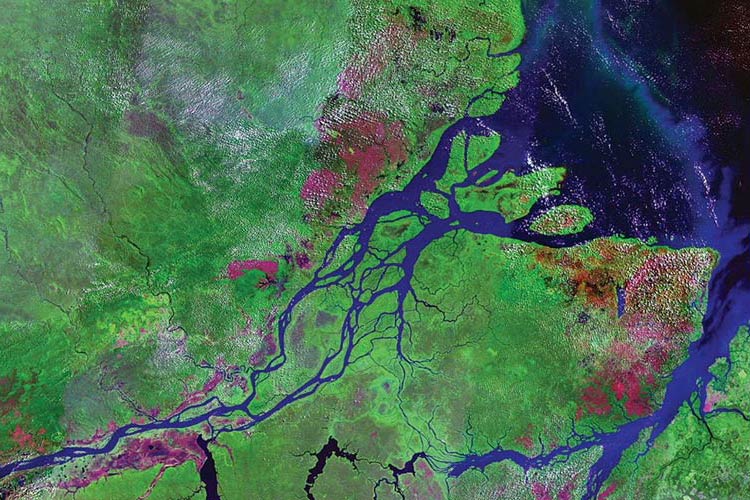
The largest river delta
The Amazon River delta is considered to be the largest river delta in the world. It is located where the Amazon River meets the Atlantic Ocean, and it covers an area of about 260,000 square kilometers (100,000 square miles). The delta is formed by the sediment deposited by the river as it flows into the ocean.
The Amazon River delta is characterized by a complex network of channels, islands, and wetlands. The delta is home to a diverse array of plant and animal species, many of which are found nowhere else in the world. The delta is an important habitat for many fish and shellfish species, as well as for migratory birds.
The delta is also an important area for human settlements, with many towns and cities located along the river’s banks. The delta is an important source of livelihood for many people living in the region, including fishing and transportation.
However, the delta is facing many threats, including coastal erosion, sedimentation, and pollution. The construction of hydroelectric dams and other infrastructure projects upstream can also have negative effects on the delta’s hydrology and biodiversity. Deforestation and mining can also have negative impacts on the ecosystem and the communities that depend on it. It’s important to preserve and protect the delta, as it is a unique and important ecosystem with a rich biodiversity.
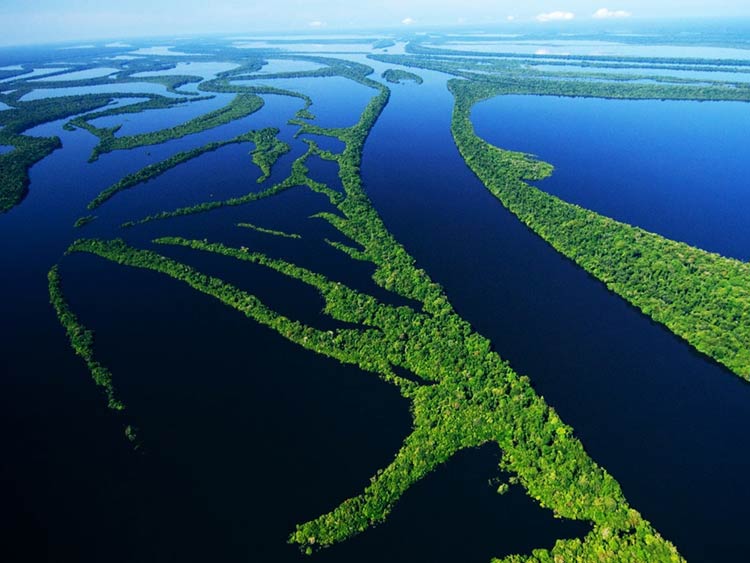
Tributaries of the Amazon River
The Amazon River is the largest river in the world by discharge, and it is formed by a complex network of tributaries and channels. Some of the main tributaries of the Amazon River include:
The Marañón River
This is considered by some as the main tributary of the Amazon River. It originates in the Andes Mountains of Peru and joins the Ucayali River to form the Amazon River.
The Ucayali River
This river is considered as one of the main tributaries of the Amazon River. It originates in the Andes Mountains of Peru, and joins the Marañón River to form the Amazon River.
The Madeira River
This river is the largest tributary of the Amazon River by volume, and it originates in the Andes Mountains of Bolivia and Brazil. It flows northwestward through Brazil and joins the Amazon River near the city of Manaus.
The Tapajós River
This river originates in the Brazilian Highlands and flows westward to join the Amazon River near the city of Santarém.
The Xingu River
This river originates in the Brazilian Highlands and flows eastward to join the Amazon River near the city of Belém.
The Negro River
This river is considered as the largest left-bank tributary of the Amazon River. It originates in the Guiana Highlands and flows southward to join the Amazon River near the city of Manaus.
The Tocantins River
This river originates in the Brazilian Highlands and flows eastward to join the Pará River, which is a major tributary of the Amazon River
These are just some of the many tributaries of the Amazon River, and the entire Amazon River basin encompasses an area of about 7,050,000 square kilometers (2,720,000 square miles) and includes parts of nine South American countries.

Length of the Amazon River
The length of the Amazon River is a subject of debate among scientists and geographers, as the river is a complex system of channels and tributaries that can be difficult to measure. The length of the main stem of the Amazon River, from its farthest source to its mouth, is generally considered to be about 6,400 kilometers (4,000 miles). However, when including all the tributaries, some estimates put the total length of the Amazon River system at over 7,000 kilometers (4,350 miles).
It’s important to note that, the exact length of the Amazon River can be difficult to determine due to the fact that the river’s channel constantly shifts and changes due to sedimentation and erosion, making it hard to trace the main stream. Additionally, the width of the river is also affected by the season, the width of the river can increase up to 11 kilometers (7 miles) during the rainy season.
The Amazon River is the largest river in the world by discharge and the second longest, it’s formed by the confluence of many rivers and tributaries in the region, and it’s an important source of livelihood for many people living in the region, including fishing and transportation.
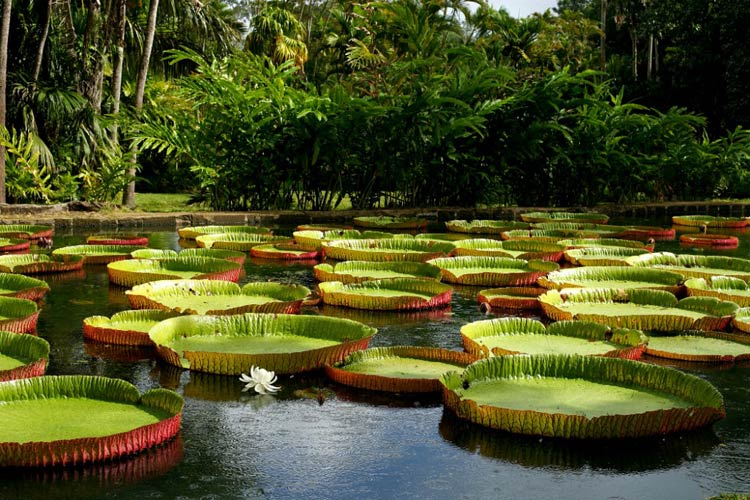
Flora of the Amazon River
The Amazon River and its basin are home to an incredibly diverse array of plant species, many of which are found nowhere else in the world. The Amazon rainforest, which covers much of the river’s basin, is one of the most biodiverse places on Earth and is home to an estimated 40,000 plant species.
The rainforest is dominated by tall, broad-leaved trees that form a dense canopy, which shades the forest floor. The canopy is home to many epiphytes, such as orchids and bromeliads, which are plants that grow on other plants for support. There are also many species of lianas, which are woody vines that climb up the trees.
The understory of the rainforest is also diverse, and it is home to many species of shrubs, herbaceous plants, and ferns. The forest floor is also home to many species of palms, including the sago palm and the açaí palm, which are important sources of food and medicine for the indigenous people of the region.
The river itself is also home to many aquatic plant species, including water lilies, floating plants, and submerged plants. These plants provide important habitat for many aquatic animals, including fish and amphibians.
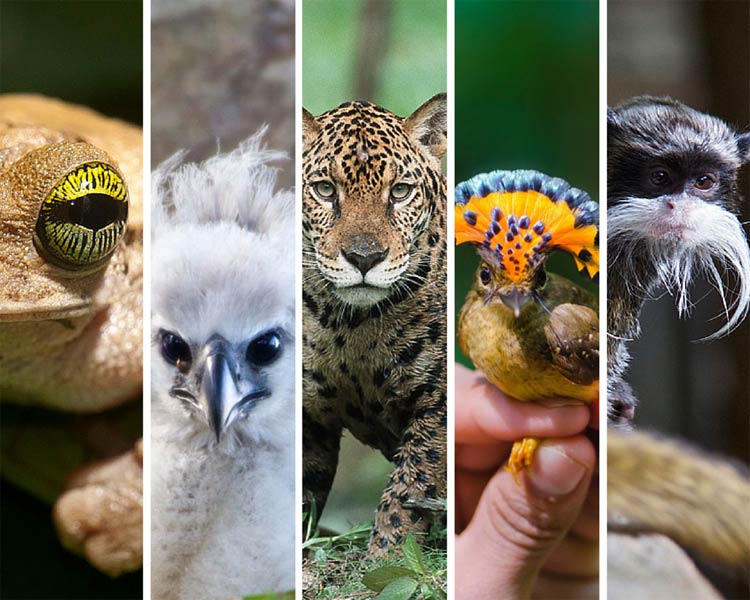
Fauna of the Amazon River
The Amazon River and its basin are home to an incredibly diverse array of animal species, many of which are found nowhere else in the world. The region is known for its high levels of biodiversity, and it is home to many different types of animals, including mammals, birds, reptiles, amphibians, and fish.
Mammals
Mammals found in the Amazon include jaguars, tapirs, capybaras, sloths, monkeys, and the Amazon River dolphin. There are also many species of bats and rodents, as well as several species of primates, including the muriqui, the largest New World monkey, and the black spider monkey.
Birds
Birds in the Amazon include the hoatzin, the harpy eagle, the scarlet macaw, the black skimmer, and the hoatzin. There are also many species of parrots, toucans, and hummingbirds.
Reptiles and amphibians
Reptiles and amphibians found in the Amazon include anacondas, piranhas, caimans, electric eels, and the giant otter. There are also many species of turtles and lizards, as well as several species of frogs and toads.
Fish
Fish found in the Amazon include the piranha, the electric eel, the arapaima, and the candonga. There are also many species of catfish, tetras, and cichlids.
Insects
The Amazon River and its basin are also home to many species of insects, including butterflies, beetles, and ants. The region is also home to many species of spiders and other arachnids.
However, it’s important to note that, human activities such as deforestation, mining, and pollution, have impacted the fauna of the Amazon region, with some species facing the risk of extinction. The destruction of habitats and the introduction of invasive species have also had a negative impact on the local ecosystem, which can lead to changes in the population and distribution of animals in the region. Additionally, hunting and illegal wildlife trade also threaten the survival of many species, making conservation efforts crucial to protect and preserve the unique biodiversity of the Amazon River and its basin.

Protected areas
The Amazon River and its basin are home to many protected areas, which are established to conserve the unique biodiversity of the region and to protect the rights and livelihoods of the indigenous people who live there. Some examples of protected areas in the Amazon include:
The Amazon Rainforest Reserve
This reserve is located in the northern part of Brazil and covers an area of over 4.1 million hectares. It is home to many different plant and animal species, and it is an important area for conservation and research.
The Manú National Park
This park is located in the Andes Mountains of Peru and covers an area of over 1.7 million hectares. It is home to many different plant and animal species, including many species that are found nowhere else in the world.
The Yasuní National Park
This park is located in the Ecuadorian Amazon and covers an area of over 982,000 hectares. It is home to many different plant and animal species, and it is an important area for conservation and research.
The Tambopata National Reserve
This reserve is located in the Peruvian Amazon and covers an area of over 716,000 hectares. It is home to many different plant and animal species, and it is an important area for conservation and research.
The Tumucumaque Mountains National Park
This park is located in the Brazilian Amazon and covers an area of over 3.3 million hectares. It is home to many different plant and animal species, and it is an important area for conservation and research.
These are just a few examples of the many protected areas in the Amazon River and its basin, which are important for the conservation of biodiversity and the protection of the rights and livelihoods of the indigenous people who live there.
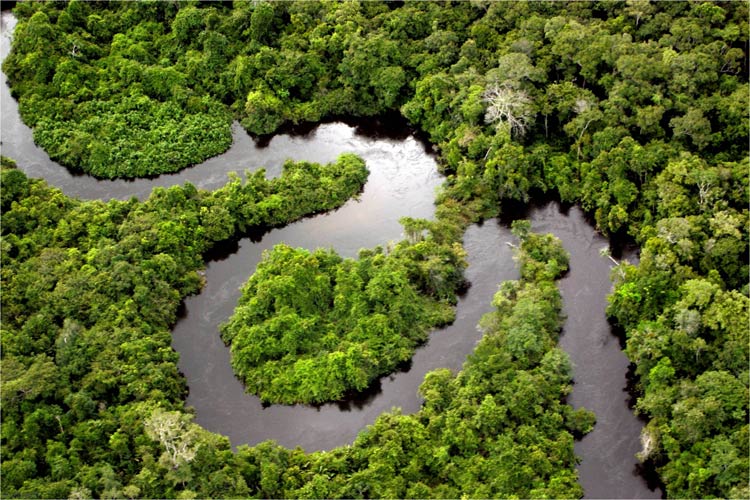
Details / dimensions
Amazon River
- The length of the river, depending on the measurement, 6,275 to 7,025 kilometers (3900 – 4365 mi).
- The sources of the river are located in the Peruvian Andes.
- The width of the delta is about 325 kilometers (202 mi), usually measured from Cabo Norte (a cape located straight east of Pracuúba in the Brazilian state of Amapá), to Ponta da Tijoca (near Curuçá, in the state of Pará).
- Width:
- minimum: 700 m (2,300 ft)
- average: 3 km (1.9 mi)
- maximum: 10 km (6.2 mi) to 14 km (8.7 mi)
- the width of the main current at the mouth is about 15 km (9.3 mi).
- Depth of the river between Manacapuru and Óbidos is 20 – 26 meters (66 – 85 ft). Moving toward the mouth, the depth can increase to 50 m (164 ft), and in some places even to 100 m (328 ft).
- average: 15 m (49 ft) to 45 m (148 ft)
- maximum: 150 m (490 ft)
- The size of the area from which water is collected into the Amazon and its tributaries is 7.05 million square kilometers (2,700,000 sq mi) – for comparison, the area of Australia (7.69 million square kilometers).
- The Amazon basin covers an area of 39.5% of the continent.
- The river introduces 300,000 m3/s into the Atlantic Ocean during the rainy season and 209,000 m3/s during the dry season.
- elevation: 5,220 m (17,130 ft)

Interesting facts
- The Amazon River is home to the largest variety of fish species in the world, with over 3,000 known species of fish found in its waters.
- The Amazon River is also home to one of the world’s largest freshwater fish, the Arapaima, which can grow up to 9 feet long and weigh up to 440 pounds.
- The Amazon River basin is home to the world’s largest contiguous tropical rainforest, which covers over 2.1 million square miles.
- The Amazon River is responsible for about 20% of the world’s total river flow, and its discharge is greater than the next eight largest rivers combined.
- The Amazon River is home to the world’s largest river island, Marajó Island, which is located at the mouth of the river and has an area of over 40,000 square kilometers.
- The Amazon River is home to the world’s largest river dolphin, the Amazon River Dolphin, which can grow up to 8.5 feet long.
- The Amazon River is home to the world’s largest rubber tree plantation, which covers over 3.5 million hectares of land.
- The Amazon River is home to the world’s largest hydroelectric power plant, the Belo Monte Dam, which has a capacity of 11,233 megawatts.
- The Amazon River is home to the world’s largest mangrove forest, which covers over 20,000 square kilometers and is an important habitat for many fish and bird species.
- The Amazon River is known for its unique phenomenon called “pororoca,” a tidal bore that can reach heights of up to 30 feet and travel as far as 600 miles up the river.
- The Amazon River and its basin are home to many indigenous communities, who have lived in the region for thousands of years and have developed a deep understanding of the local ecosystem.
- The Amazon River is home to the world’s largest floating city, Iquitos, which is located in Peru and has a population of over 400,000 people.
- The Amazon River is home to the world’s largest river-borne megalopolis, the Manaus-Belém megalopolis, which is located in Brazil and has a population of over 7 million people.
- The Amazon River is home to the world’s largest river-borne port, the Port of Manaus, which is located in Brazil and is an important hub for the region’s economy.
- The Amazon River is home to the world’s largest river-borne market, the Mercado Adolpho Lisboa, which is located in Manaus, Brazil and is a popular destination for tourists.
- The Amazon River is home to the world’s largest river-borne prison, the Manaus Regional Recovery Center, which is located in Brazil and is an important rehabilitation center for prisoners.
- The Amazon River is home to the world’s largest river-borne hydroelectric power plant, the Balbina Hydroelectric Plant, which is located in Brazil and has a capacity of 844 megawatts.
- The Amazon River is home to the world’s largest river-borne oil refinery, the Manaus Refinery, which is located in Brazil and is an important part of the country’s energy sector.
